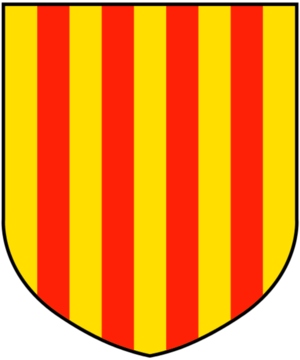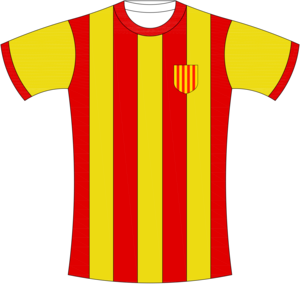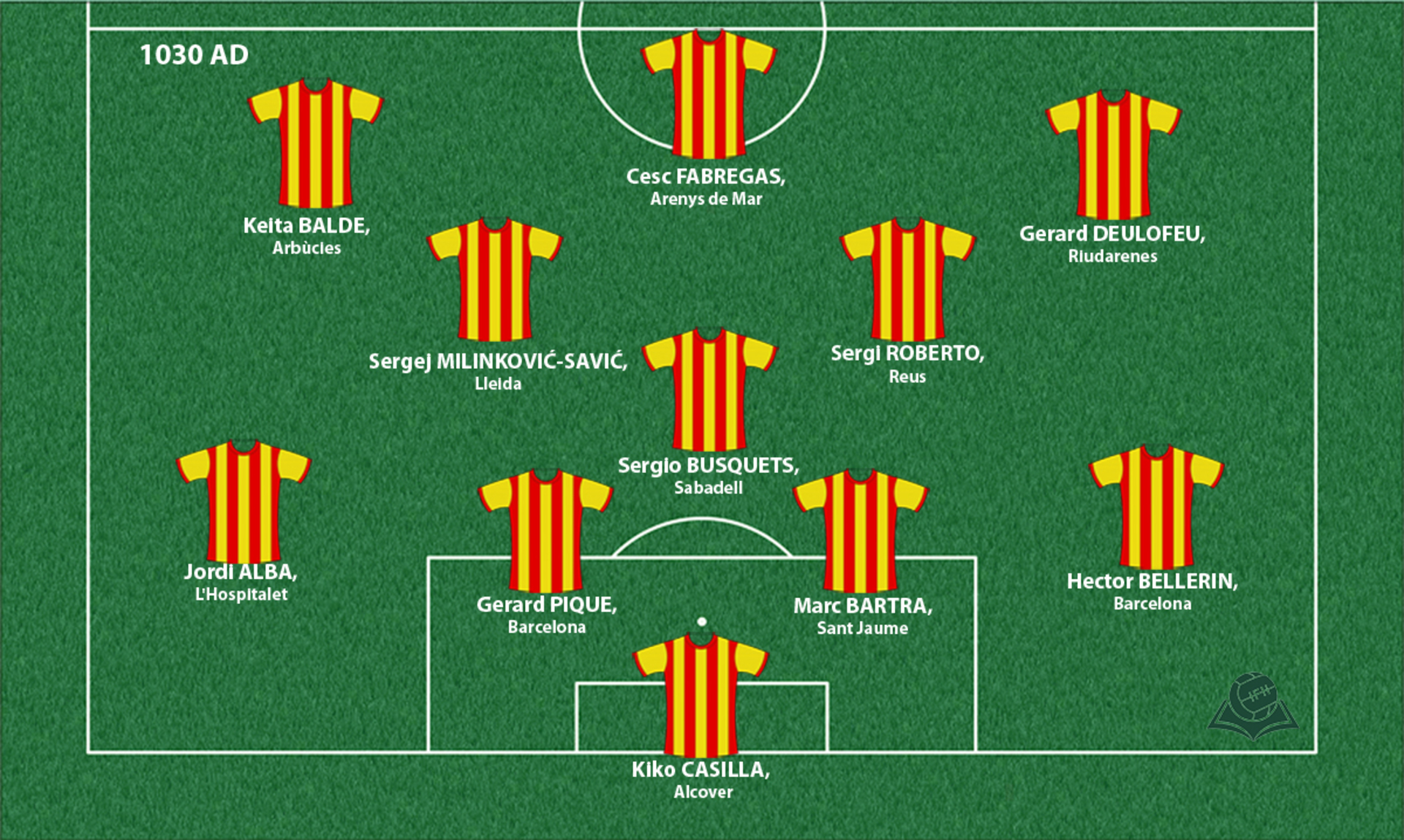County of Barcelona
The County of Barcelona was originally a frontier region under the rule of the Carolingian dynasty. By the end of the 10th century, the Counts of Barcelona were de facto independent.

Coat of arms

Shirt
| Position | First name | Last name | Mjesto rođenja | Like | Dislike | |
|---|---|---|---|---|---|---|
| GK | Kiko | CASILLA | Alcover |
21 |
1 |
|
| GK | Pau | LOPEZ | Girona |
2 |
0 |
|
| DC | Gerard | PIQUE | Barcelona |
19 |
9 |
|
| DC | Jordi | AMAT | Barcelona |
0 |
0 |
|
| DC | Marc | BARTRA | Sant Jaume |
7 |
0 |
|
| DC | Marc | MUNIESA | Lloret de Mar |
2 |
0 |
|
| DRC | Sergi | GOMEZ | Arenys de Mar |
1 |
0 |
|
| DRL | Martin | MONTOYA | Gava |
1 |
0 |
|
| DR/MR | Hector | BELLERIN | Barcelona |
11 |
5 |
|
| DR/MR | Pol | LIROLA | Mollet del Valles |
1 |
0 |
|
| DL | Aaron | CARICOL | Montmeló |
2 |
0 |
|
| DL | Jordi | ALBA | L'Hospitalet |
18 |
3 |
|
| DMC | David | LOPEZ | Barcelona |
1 |
0 |
|
| DMC | Oriel | ROMEU | Ulldecona |
0 |
0 |
|
| DMC | Sergi | SAMPER | Barcelona |
1 |
0 |
|
| DMC | Sergio | BUSQUETS | Sabadell |
14 |
2 |
|
| MC | Carles | ALENA | Mataró |
1 |
0 |
|
| MC | Sergej | MILINKOVIĆ-SAVIĆ | Lleida |
16 |
3 |
|
| MC/DR | Sergi | ROBERTO | Reus |
6 |
1 |
|
| AMC/SS | Cesc | FABREGAS | Arenys de Mar |
11 |
1 |
|
| AMRLC | Jon | TORAL | Reus |
1 |
0 |
|
| AMRL | Adama | TRAORE | L’Hospitalet |
2 |
0 |
|
| AMRL | Cristian | TELLO | Sabadell |
4 |
0 |
|
| AMRL | Gerard | DEULOFEU | Riudarenes |
4 |
0 |
|
| AMRL | Jordi | MBOULA | Granollers |
1 |
0 |
|
| AMRL | Samu | CASTILLEJO | Barcelona |
2 |
0 |
|
| AMR/DR | Aleix | VIDAL | Puigpelat |
3 |
0 |
|
| AMRL/FC | Keita | BALDE | Arbùcies |
6 |
0 |
|
| FRLC | Bojan | KRKIĆ | Linyola |
3 |
0 |
|
| FC | Gerard | MORENO | Santa Perpètua de Mogoda |
2 |
0 |
|
| FC | Jonatahan | SORIANO | El Pont de Vilomara i Rocafort |
0 |
0 |
|
| FC | Mariano | DIAZ | Barcelona |
5 |
0 |
|
| FC | Sergio | GARCIA | Barcelona |
1 |
0 |
(Today part of: region Catalonia in Spain)
After they almost conquered the entire peninsula, Arabs were stopped by Charlemange (the king of Franks) at the end of the 8th century at the Pyrenees after which he established Spanish March (Marca Hispanica). March was composed of a number of small counties (Barcelona, Cerdanya, Girona, Andorra, etc.) all of which had their own military units. As duchies gained their independence, Spanish March broke up. The Catalan language, which evolved from Vulgar Latin in the 9th century, was spoken at the eastern part of March. Catalan shared many similarities with the Occitan language which was spoken in the southern parts of the West Francia (and later on in the kingdom of France) thus making a relationship between Gallo-Romance and Iberian-Romance languages. The political history of the area, which in the 70s of the 9th century became Catalonia, began with the rise of count Wilfred the Hairy. This also marked the beginning of independence of the Wilfred’s successors in comparison to the rulers of the Caroline dynasty in the West Francia.
However, like Wilfred, his successors did not want to take the title of the king. When the count of Barcelona refused to take an oath of loyalty to the new ruling dynasty Capet in 987, vassals stopped existing. Counts of Barcelona were trying to spread their dominance to adjacent areas until the middle of the 12th century. Such country, united by a count of Barcelona, was renamed Catalonia at the beginning of the 12th century because the count of Barcelona was referred to as catalanicus heroes, rector catalanicus and dux catalanensis.
Sources
- Felipe FERNANDEZ-ARMESTO, Narodi Europe, Zagreb, 1997.
- Roberto LOPEZ, Rođenje Evrope : stoljeća V-XIV, Zagreb, 1978.
- County of Barcelona, https://en.wikipedia.org/wiki/County_of_Barcelona
- ''History of Catalonia'', https://en.wikipedia.org/wiki/History_of_Catalonia
- ''Katalonski jezik'', https://hr.wikipedia.org/wiki/Katalonski_jezik
- ''Španjolska'', http://www.enciklopedija.hr/Natuknica.aspx?ID=59817
- Coat of arms: https://commons.wikimedia.org/wiki/File:Coat_of_Arms_CATALONIA.svg
